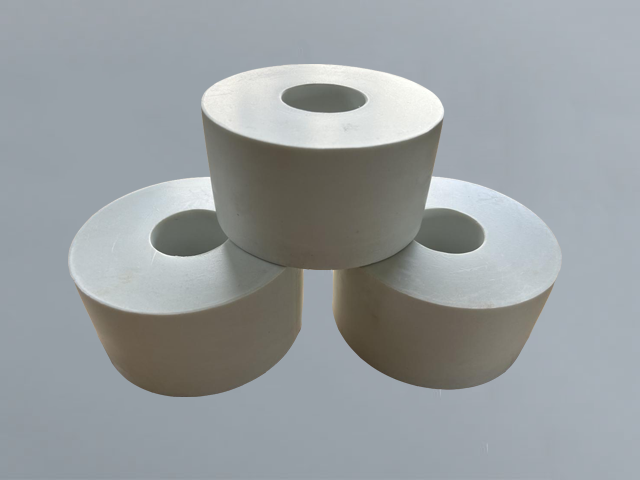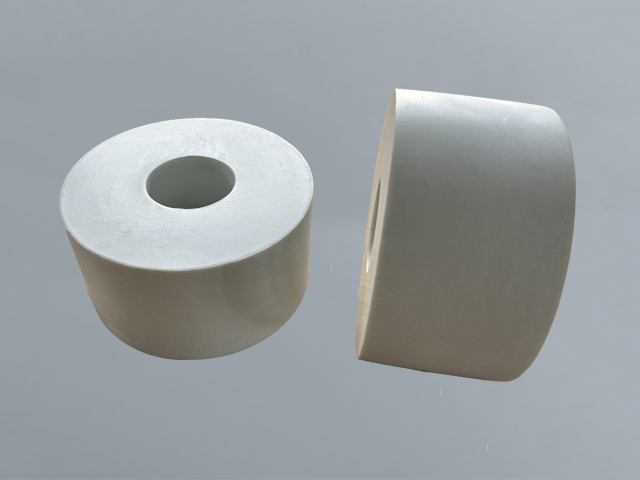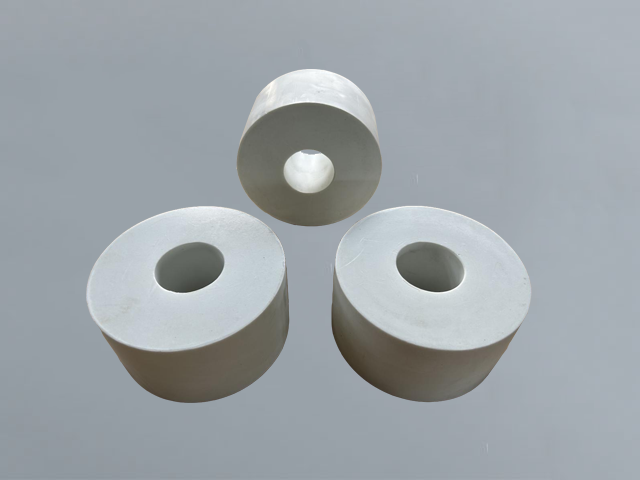Introduction to 15% Glass Fiber Reinforced PTFE Tube
This is a high-performance composite material tube made by adding glass fiber reinforcement to polytetrafluoroethylene (PTFE). The name directly reveals its composition and form:
- Base Material: Polytetrafluoroethylene (PTFE), commonly known as "Teflon" or the "King of Plastics."
- Reinforcing Material: Glass Fiber, added at a proportion of 15%.
- Form: Tube.
Why Add 15% Glass Fiber to PTFE?
Pure PTFE boasts unparalleled chemical inertness, an extremely low coefficient of friction, and excellent high and low-temperature performance. However, it also has several significant drawbacks:
1. Poor Wear Resistance: It is relatively soft and prone to wear.
2. Cold Flow: It undergoes plastic deformation (creep) under sustained pressure.
3. Low Mechanical Strength: It lacks rigidity and hardness.
4. Poor Thermal Conductivity: It does not dissipate heat well.
5. Moderate Dimensional Stability: It has a relatively high coefficient of thermal expansion.
Adding 15% glass fiber specifically addresses these shortcomings:
- Significantly Improves Wear Resistance: The glass fibers act as hard reinforcement points, greatly enhancing the material’s abrasion resistance and extending its service life.
- Enhances Mechanical Strength: Tensile strength, compressive strength, and stiffness (rigidity) are noticeably improved.
- Suppresses Cold Flow: It significantly reduces creep under long-term pressure, maintaining shape stability.
- Improves Dimensional Stability: It lowers the coefficient of thermal expansion, making the part’s dimensions less susceptible to temperature changes.
- Enhances Thermal Conductivity: It somewhat improves PTFE’s insulating properties, allowing for better heat dissipation.
Key Characteristics and Advantages
By combining the advantages of PTFE and glass fiber, 15% glass fiber reinforced PTFE tubes exhibit the following comprehensive properties:
1. Excellent Wear Resistance: Its wear resistance is hundreds of times better than that of pure PTFE, making it a recognized top-tier wear-resistant material.
2. Retains Outstanding Chemical Stability: It still resists almost all strong acids, strong alkalis, strong oxidants, and organic solvents.
3. Wide Temperature Range: It can be used continuously within a temperature range of -180°C to +250°C, with even higher short-term tolerance.
4. Very Low Friction Coefficient: It remains highly lubricious and non-stick.
5. Excellent Mechanical Properties: Higher strength, stiffness, and creep resistance.
6. Aging Resistance, Non-stick Properties, and Hydrophobicity: Same as pure PTFE.
7. Good Insulation Properties: It remains an excellent electrical insulating material.
Common Applications
This reinforced tubing is primarily used in harsh conditions where both wear resistance and corrosion resistance are critical. Common applications include:
- Chemical Industry:
- Abrasion and Corrosion-Resistant Transfer Tubes: Transporting corrosive media containing solid particles or crystals (e.g., slurries, powders, acids, and alkalis). Examples include pipelines in chlor-alkali industries, pesticides, and dye production.
- Heat Exchanger Tubes: Used in applications requiring corrosion resistance and anti-fouling properties.
- Mechanical Engineering:
- Hydraulic and Pneumatic Systems: Used as wear-resistant, high-temperature-resistant, and corrosion-resistant sealing tubes, bushings, and bearing tubes.
- Oil-Free Lubrication Components: Manufacturing gears, bearings, piston rings, guide rail liners, especially in environments with corrosive media.
- Semiconductor and Electronics Industry:
- Transporting high-purity but abrasive chemical raw materials (e.g., CMP slurry).
- Food and Pharmaceutical Industry:
- Pipelines requiring high-temperature sterilization and preventing material adhesion (must comply with relevant health standards).
Comparison with Other Reinforced PTFE Materials
Common reinforcements for PTFE besides glass fiber include graphite, molybdenum disulfide, carbon fiber, and bronze. Different fillers emphasize different properties:
- 15% Glass Fiber (GF): Excellent overall performance, particularly emphasizing greatly improved wear resistance and mechanical strength. It is one of the most commonly used and classic reinforcement formulas.
- Graphite/Molybdenum Disulfide: Focus more on further improving self-lubrication and reducing the friction coefficient.
- Carbon Fiber (CF): Improves strength, stiffness, and wear resistance while offering better thermal conductivity and dimensional stability.
- Bronze: Greatly enhances thermal conductivity and compressive strength, often used in high PV (Pressure × Velocity) bearing applications.
The 15% Glass Fiber Reinforced PTFE Tube is a high-performance wear and corrosion-resistant engineering tubing that enhances pure PTFE by "building on its strengths and avoiding its weaknesses."
- Core Value: It dramatically improves upon pure PTFE’s critical weaknesses of poor wear resistance and susceptibility to creep, while largely retaining PTFE’s top-tier chemical inertness, broad temperature range, and low friction properties.
- Typical Applications: It is ideally suited for extreme conditions where both corrosive chemical media and mechanical wear (e.g., erosion from particles or powders) are present. It is a key material in industries such as chemical and mechanical engineering for solving special challenges.




